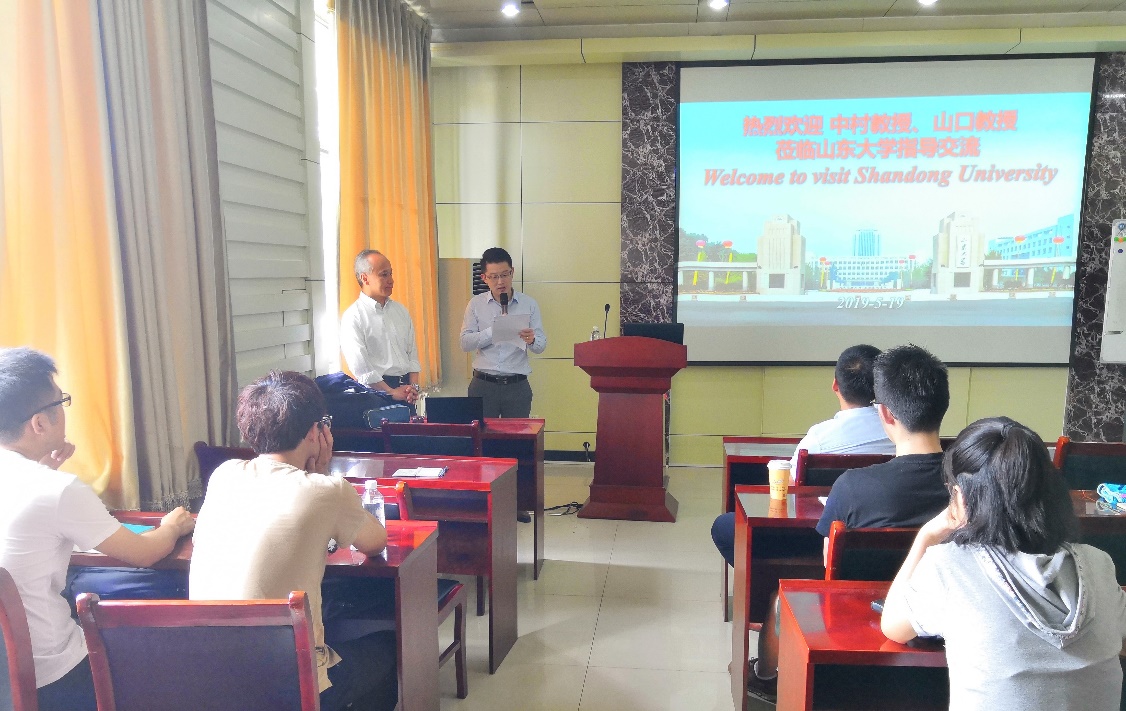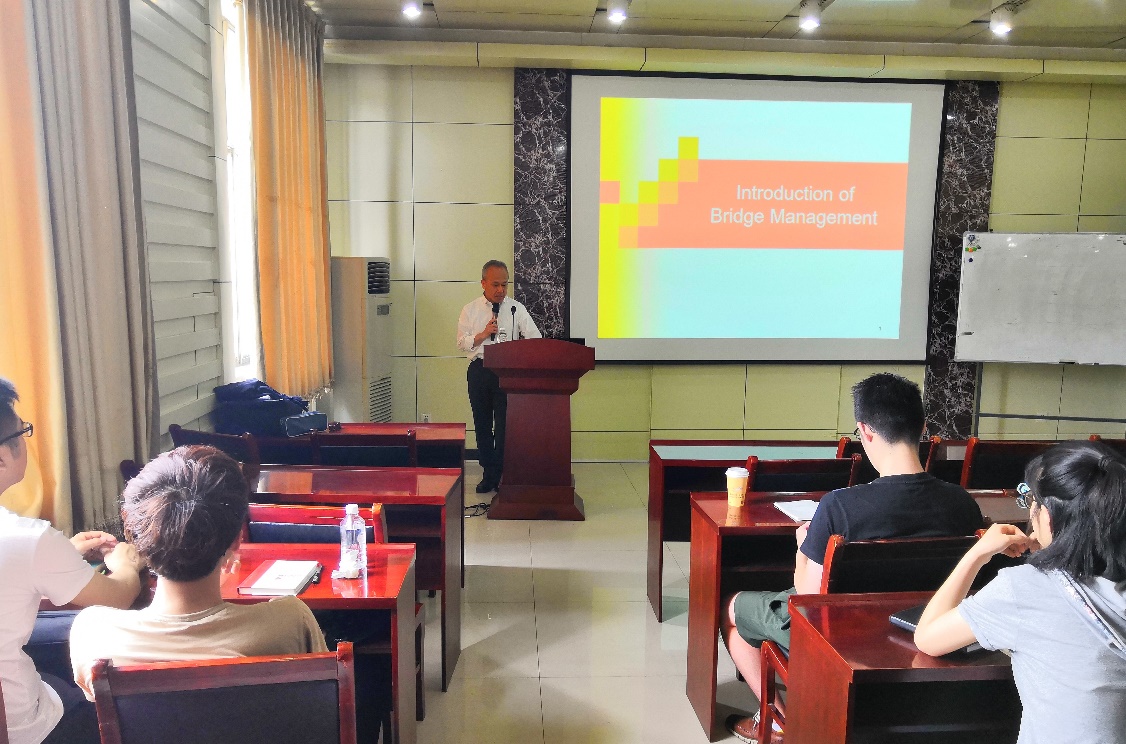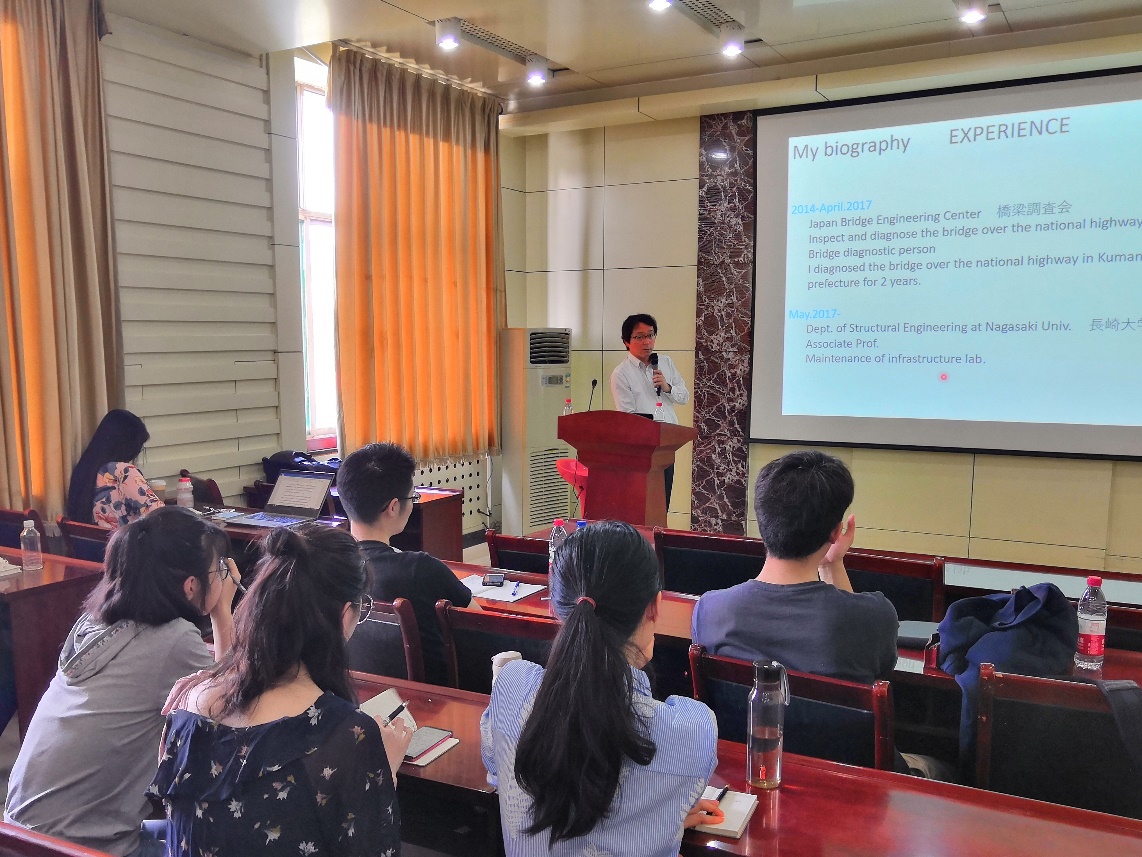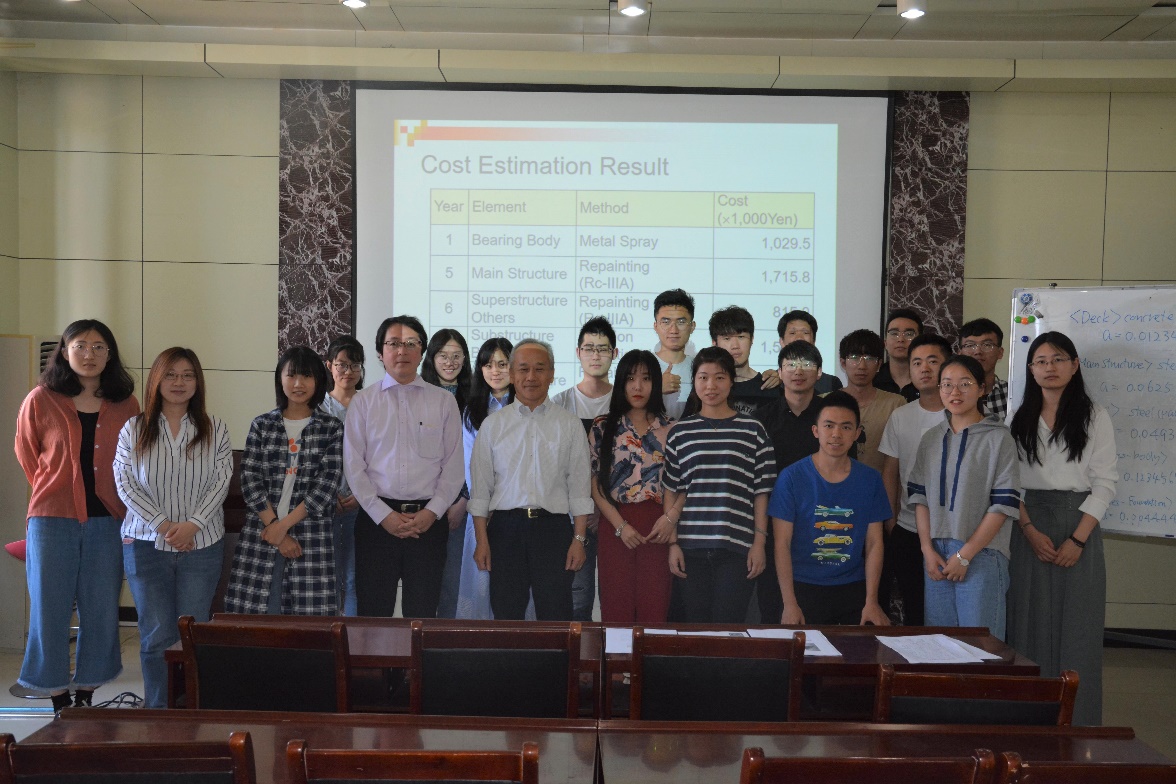On May 19 and 20, Professor Nakamura, School of Social Environmental Design Engineering, Nagasaki University, Japan, and Professor Yamaguchi, School of Structural Engineering, were invited to visit Shandong University and give lectures at Shimao School on the third floor of the Water Conservancy Building, Qianfoshan Campus to all participants in the China, Japan and South Korea Asian Campus Project in 2019. The theme of the lecture was "Asian Foundation". Facilities maintenance. The purpose of this lecture is to guide our students to understand the concept of civil infrastructure maintenance and the theory of the basic field of structural engineering and to effectively use various information to manage civil infrastructure. The opening ceremony was presided over by Han Bo, Vice President of Civil Engineering and Water Conservancy College.

Professor Han Bo introduces Professor Nakamura to you.
Professor Nakamura's lectures are logical and clear. He summarized bridge management as a maintenance method from concept to the end of service life. In view of the process of bridge management, he believes that it should be implemented from six aspects: database information, inspection, condition assessment, maintenance strategy, prediction deterioration and priority ranking. He repeatedly emphasized that regular maintenance and maintenance, especially from cracking, rust, expansion, buckling, decay and other aspects of recording its life cycle is very necessary. In order to describe the state of bridge in depth, he also proposed a mathematical model to describe bridge degradation by regression analysis, and used Markov chain to analyze the future state of bridge degradation process. Professor Nakamura also analyzed the deterioration and damage of steel structure and its causes. Through statistical analysis, he concluded that the main cause of deterioration and damage of steel structure is corrosion! Then, he introduced the types of corrosion - dry corrosion, wet corrosion, uniform corrosion, local corrosion, electrochemical corrosion, point corrosion and crevice corrosion one by one.

Professor Nakamura teaches you
Professor Yamaguchi introduced the diagnostic detection of bridge structure and the repair and reinforcement of concrete structure by displaying a series of pictures of bridges. He pointed out that steel, concrete, stone and wood are the four main materials for bridge construction, and emphasized that concrete bridges account for a large proportion of the total number of bridges. Then, he introduced the source, types and properties of reinforced concrete. By comparing and analyzing the cracks of reinforced concrete beams, Professor Yamaguchi concludes that reasonable reinforcement arrangement will only cause slight cracks in the tensile zone of reinforced concrete beams, which fully proves that concrete and reinforcement are the best partners. Combining the two can give full play to the compressive and tensile properties of concrete and reinforcement. Professor Yamaguchi's lecture style is humorous and vivid. In explaining the concept of prestressing concrete, he skillfully applied cartoon characters vividly and vividly to introduce two kinds of prestressing methods of prestressing concrete - the first tensioning method and the second tensioning method, which stimulated the students'interest in learning. Towards the end of the lecture, the two professors exchanged with the students on site on the calculation of bridge engineering health index and so on.

Professor Yamaguchi teaches you
The two-day lecture is short, but it covers the backbone of infrastructure maintenance in Asia. The students who attended said that they had benefited a lot. They had a further understanding of the maintenance methods of infrastructure such as bridges, steel structures and concrete structures, which has important guiding significance for our students to open up new research directions and continue to study in depth.

Professors Nakamura and Yamaguchi pose with all the participants of the Asian Campus Program in China, Japan and South Korea.